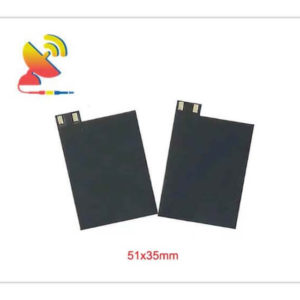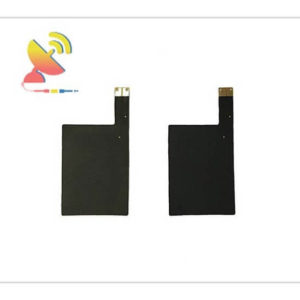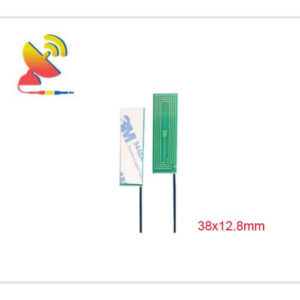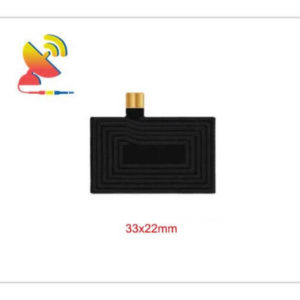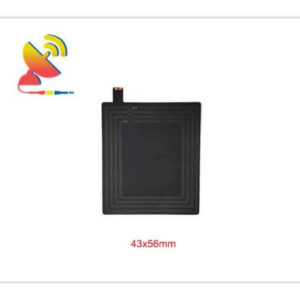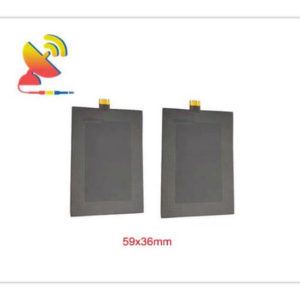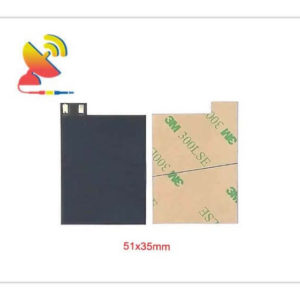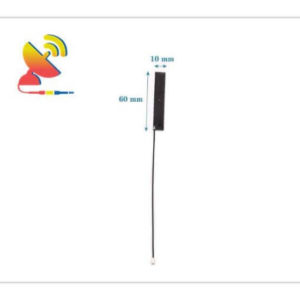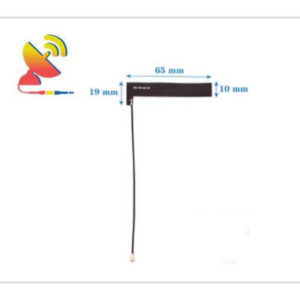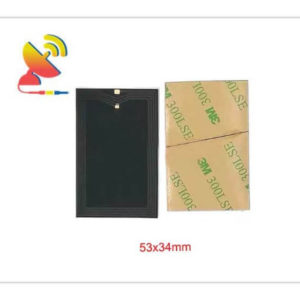RFID Antenna
RFID Antenna Manufacturer
C&T RF Antennas Inc is the indoor & outdoor RFID antenna manufacturer internal & external RFID antenna supplier in China.
What is the frequency band used by RFID?
Radiofrequency identification (RFID) generates and radiates electromagnetic waves. Since RFID systems have to take into account other radio services and cannot cause interference to other radio services, RFID systems usually use the ISM band, which is specially reserved for industry, science, and medicine.
In addition to the ISM band, RFID also uses the frequency between 0 ~ 135kHz, China in 2007 also specifically divided for the RFID frequency band.
RFID read-write and electronic label between the radio frequency signal transmission mainly has 2 ways, one is inductive coupling way, another is electromagnetic backscattering way, these two ways use different frequencies, the working principle is also different.
RFID inductive coupling method using the frequency
(1) Less than 135kHz RFID system
The band of electronic tags works at low frequencies, the most commonly used operating frequency of 125kHz and 135kHz. the working characteristics and applications of RFID systems in this band are as follows.
Working frequency is not subject to radio frequency control.
Reading distance is generally less than 1m.
There is a higher inductively coupled power that can be provided for the use of electronic tags.
The wireless signal can penetrate water, organic tissue, wood, etc.
The low-frequency, electronic label-related international standards are ISO11784/11785, and ISO18000-2, etc.
Typical applications for motor vehicles include remote keyless access (RKE), passive keyless access (PKE), and passive keyless start (PKS).
Typical applications for animals and livestock are animal identification, animal husbandry, livestock feeding, and frozen chain.
Typical applications for commercial and industrial use are store alarm theft prevention systems (EAS), industrial laundry, pallet monitoring in commercial transportation, container identification (e.g. butane storage tanks), tool identification (e.g. hospital carts), 20-inch container monitoring, luxury goods monitoring and casino chip monitoring.
Typical applications for the public sector include tree monitoring (health status, watering) in Paris, access control in high-security areas such as airports, book inventory and membership card recording in libraries, etc.
(2) 13.56MHz RFID system
These 13.56MHz frequency band electronic tags work in high frequency, RFID system working characteristics and applications are as follows.
This 13.56MHz is the most typical RFID high frequency working frequency.
Relevant international standards are ISO14443, ISO15693, ISO18000-3, etc.
This 13.56MHz band is used worldwide as an ISM band.
High clock frequency for cryptographic functions or use of microprocessors.
Fast data transmission, with a typical value of 106Kbit/s.
Electronic tags are generally made in the shape of standard cards. The electronic label in this band is the most used electronic label in practical applications.
13.56MHz Typical applications used for contactless smart cards are electronic wallets (school canteens, city bus cards, electronic train tickets), access control (stadium tickets, nuclear power plant access), and road transportation automatic ticketing systems (AFC). There are currently more than 2 billion contactless smart cards worldwide.
Personal and official data are passports, electronic visas, resident ID cards (our resident ID card uses this band) and driver’s licenses, etc.
13.56MHz Typical applications used for monitoring and tracking are parcel monitoring (foreign DHL, FedEx), fleet management (monitoring postal vehicles, company trucks), book management (document management, book return to the shelf, book inventory), and store monitoring (anti-theft monitoring EAS, flow control, inventory), etc.
RFID electromagnetic backscattering method using the frequency
(3) 433MHz RFID system
The 433MHz band is at the bottom of the microwave frequency, with strong penetration, capacity, and transmission distance, such as 70m ~ 100m distance applications.
The bandwidth of this band is narrower (less than 1MHz), the antenna size is larger, and active electronic tags are often used.
The 433MHz band-active RFID technology is suitable for a variety of environments, especially for complex environments such as tunnels and mountainous areas.
Typical applications are motor vehicle remote control locking systems (RKE), tire pressure inspection, and control system wheel recognition positioning.
(4) 800/900MHz RFID system
This band is the main frequency band to achieve the Internet of Things, mainly using passive tags, for 4m ~ 7m applications, up to 10mde applications can be extended.
860MHz~960MHz is the communication frequency between the second-generation EPC tag and the reader described in the EPC Gen2 standard.
EPC Gen2 standard is the EPC global most dominant RFID standard, different regions of the world allocated the spectrum of the band for UHF RFID, Gen2 standard reader can be applied to different regions of the requirements.
China according to the actual situation of frequency use and related experimental results, combined with the views of the relevant departments in China, and after the frequency planning expert advisory committee’s deliberations, planning 840MHz ~ 845MHz, and 920MHz ~ 925MHz band for RFID technology.
To the current level of technology, passive microwave tags and more successful products are relatively concentrated in the 800/900MHz band, especially 902MHz ~ 928MHz working band, such as the United States for 902MHz ~ 928MHz.
800/900MHZ equipment cost is lower.
Typical applications are EPC Gen2 tags, automatic identification system (ATIS) of our railroad car numbers, store alarm anti-theft system (EAS), supply chain management, postal bag identification, container management, airport baggage classification, etc.
EPC Gen2 tags hope to replace barcode applications, these tags are applied millions of times a day, billions of times a year, are disposable, and can be applied to baggage, supply chain management, the transportation industry, etc.
(5) 2.4 GHz RFID system
The band bandwidth is wider (up to about 100MHz), the propagation loss is larger, and the antenna size is smaller, mainly using active tags, suitable for long-distance applications, such as the distance of 100m.
Japan’s ubiquitous identification (Ubiquitous ID, UID) standard system is one of the three major standard systems of radio frequency identification in the world, UID uses a 2.450GHz RFID system.
Typical applications are the tag and real-time positioning system (RTL) used in Japan, etc.
(6) 5.8 GHz RFID system
This frequency band is less than 800/900MHz and 2.45GHz band.
5.8GHz is mostly active electronic tags.
Typical applications are road transportation electronic toll collection and our highway non-stop toll collection (ETC), etc.
Buying Guide for the RFID antenna
Gain: What are the dBi of the RFID antennas?
1dBi to 15dBi high gain antennas.
VSWR: What is the VSWR of the RFID antennas?
≤1.5 for single-band frequency, ≤2.0 for dual-band frequencies, and ≤3.0 for multi-band frequencies
Impedance: What is the impedance of the RFID antennas?
50 Ω.
Frequency: What are the frequencies of the RFID antennas?
The frequencies are 0~135kHz, 13.56 MHz, 433 MHz, 860MHz~960MHz, 2.4 GHz, 5.8 GHz.
Direction: What are the directions of the RFID antennas?
Omnidirectional & directional.
Polarization: What is the polarization of the RFID antennas?
Vertical polarization.
Price: How much do the RFID antennas cost?
Based on different RFID antenna models.
Antenna Type: What are the types of RFID antennas?
Omnidirectional & directional type antennas.
Cable Type: What are the cable types of RFID antennas?
RG Cable.
Connector: What are the connectors of the RFID antennas?
SMA, BNC, TNC, N-type, Ipex, U.FL, MHF, etc.
Size: What are the sizes of the RFID antennas?
Different RFID antenna model has different size.
Material: What are the materials of the RFID antennas?
Magnetic, Plastic, Glass fiber, PCB, flexible PCB, etc.
Weight: What are the weights of the RFID antennas?
Based on different RFID antenna models has different weights.
Color: What are the colors of the RFID antennas?
Grey, black, white, green, yellow, etc.
Operation Temperature: What is the operating temperature of the RFID antennas?
-40˚C ~ +85˚C.
Storage Temperature: What is the storage temperature of the RFID antennas?
-40˚C ~ +80˚C.
Safety Emission: What is the safety emission of the RFID antennas?
RoHS/CE Compliant.
Features: What special features does the RFID antenna have?
Low-Profile, Low V.S.W.R, Low Loss, High Gain, High Efficiency, High Sensitivity, UV-Proof Water Proof, Sturdy, Durable, Good Impact Resistance, Full Day Working, Optimized Dimensions, etc
Mounting Method: What are the mounting methods of the RFID antennas?
Screw-mounted, U-clamp mount, Based mount, Pole mount, Terminal mount, etc.
Application: What are the applications of RFID antennas?
Tag, tracking, etc.
C&T RF Antennas Inc offers both standard RFID antenna products as well as customer-specific adaptations.
C&T RF Antennas Inc manufactured RF antennas including Through-hole Mount Antennas, Magnetic Mount Antennas, Rubber Duck Antennas, Fiberglass Antennas, PCB Antennas, FPC Antennas, Spring Antennas with cellular antennas, Wifi antennas, Lora antennas, GNSS antennas, and combination antennas.
C&T RF Antennas Inc manufactures the RF antenna with Dualband wifi 2.4G, wifi 5.8G, 169 MHz, 230 MHz, 315 MHz, 433 MHz, 868 MHz, 915 MHz, UWB, RFID, ADS-B, ISM, GPS, GNSS, Cellular, Lora, NB-IoT, GSM, 4G LTE, 5G NR, 6G, etc.
They are used in Wi-Fi And Bluetooth industries, IoT And M2M industries, LoRa And ISM applications, and GPS And GNSS applications.
Contact the C&T RF team for more RFID antenna details such as RFID antenna datasheet, RFID antenna pricing, and RFID antenna inventory.
Showing 1–16 of 21 results


